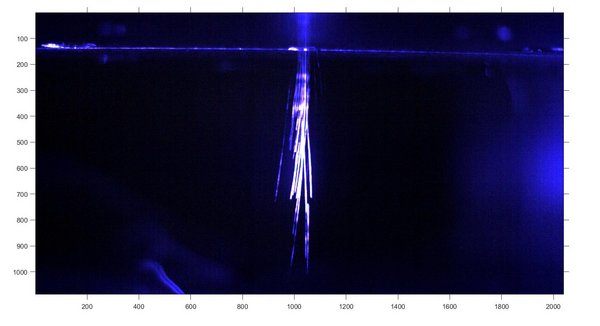Researcher in the Spotlight: Ralf Reinartz
I look for active means of transport for contaminations at low pressures.
My name is Ralf Reinartz and I’m part of the Department of Applied Physics’ Fluid & Flows research group. In my work on the transportation of (non-)spherical particles in a rarefied environment, I look for active means of transport for contaminations at low pressures. The focus is on transport due to temperature gradients, which is called thermophoresis.
Bridging the gap
Our approach uses Discrete Simulations Monte Carlo, or DSMC for short. Named after the Monte Carlo Casino, this is a simulation method which – unlike standard computational fluid dynamics (CFD) – can be used at very low pressures. All in all, we look at different aspects of the contamination process: generation, transportation and cleaning. We share our ideas during meetings and a collaboration with the plasma cleaning research of Judith van Huijstee might be a viable option in the future if we can use our findings together.
DSMC is the bridge between continuum physics and the free molecular kinetic regime. A lot is still unknown in this area and we will therefore validate the simulation results with experiments carried out at VDL. There, we try to use the temperature gradient to get micro-sized particles to float at a low pressure. The thermophoretic force on the particle, resulting from the temperature gradient, works against gravity; when these particles float, a very precise measurement of the thermophoretic force can be carried out.
Reducing particle contamination
This experiment features a lot of complexities. Creating a stable environment with a temperature gradient and obtaining accurate values for temperature and pressure in this system is not an easy task.

The main challenges, however, are visualizing these very small particles, getting a good signal and translating this into valuable results. Regarding the simulations, the main challenge is that we want to incorporate strangely-shaped particles. We are trying to achieve this by developing a raytracing technique for the interaction between the flow and the particle.
We have already obtained images of free-falling particles at a low pressure and are quite close to performing thermophoretic force measurements. DSMC is being carried out for a spherical and a cubical particle placed in a temperature gradient. The measured thermophoretic forces are quite close to what can be found in the literature. When the thermophoretic force is fully understood, it might prove to be an effective method of reducing particle contamination in the high-tech industry.